Guido Reni’s Archangel Michael masterfully depicts the celestial warrior defeating Satan, symbolizing the eternal struggle between light and darkness, a quintessential Christian art theme․
1․1 Overview of the Painting
Guido Reni’s Archangel Michael is a striking oil on canvas created in 1635, depicting the celestial warrior triumphing over Satan․ The painting captures a dramatic scene from Christian theology, with Michael, clad in a Roman military cloak and cuirass, trampling the dragon-like figure of Satan․ The artwork is renowned for its vivid use of light and color, emphasizing the contrast between divine light and darkness․ Commissioned for the Church of the Capuchins, it remains a powerful symbol of good’s victory over evil, showcasing Reni’s mastery of baroque art and emotional expression․
1․2 Historical Context of the Artwork
Guido Reni’s Archangel Michael was painted in 1635 during the Baroque period, a time of religious and artistic revival․ Commissioned by Cardinal Antonio Barberini for the Church of the Capuchins in Rome, the painting reflects the Catholic Church’s emphasis on counter-reformation ideals․ Reni’s work was part of a broader artistic movement aiming to evoke emotional and spiritual responses․ The painting’s creation coincided with a period of heightened religious fervor, making it a significant piece in the church’s collection․ It also underscores Reni’s reputation as a leading artist of his time, blending classical influences with dramatic baroque elements․
1․3 Significance of Archangel Michael in Art
Archangel Michael holds profound significance in Christian art as a symbol of divine justice and victory over evil․ Often depicted as a warrior, he embodies strength and protection․ In Guido Reni’s work, Michael trampling Satan represents the triumph of good over evil, a theme central to Christian theology․ This imagery has been a recurring motif in art, inspiring countless interpretations․ Reni’s portrayal, with its dramatic composition and emotional depth, solidifies Michael’s role as a cultural and religious icon, transcending time to resonate with audiences seeking hope and divine assurance․ His depiction remains a powerful visual testament to faith and redemption․

Guido Reni: The Artist Behind the Masterpiece
Guido Reni, a prominent 17th-century Italian painter, is celebrated for his emotional depth and classical influences, creating works that reflect divine beauty and spiritual intensity․
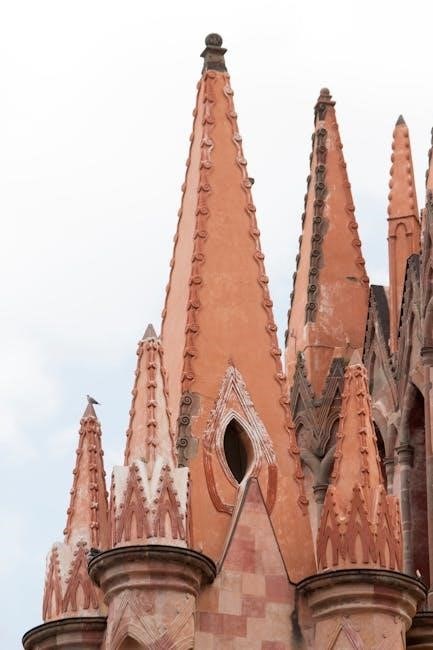
2․1 Biography of Guido Reni
Guido Reni (1575–1642) was a prominent Italian painter from Bologna, known for his expressive and emotionally charged works․ Born into a family of musicians, Reni began his artistic training under Denial and later the Carracci brothers․ He gained acclaim for his lyrical style, which blended elegance with dramatic intensity, earning him the nickname “The Divine Guido․” His career spanned multiple genres, from religious to mythological themes, leaving a lasting impact on Baroque art․ Reni’s personal life was marked by struggles, including gambling debts, yet his artistic legacy endures as a testament to his talent․
2․2 Reni’s Artistic Style and Techniques
Guido Reni’s artistic style is characterized by elegance, refinement, and emotional depth․ He excelled in using light and color to create dramatic effects, often employing chiaroscuro to heighten tension․ Reni’s compositions are balanced and harmonious, reflecting his study of classical art․ His figures are graceful, with serene expressions, conveying a sense of ideal beauty․ Reni’s technique included meticulous attention to detail and a mastery of anatomical precision․ His use of vivid colors and dynamic movement added energy to his works, while his ability to evoke emotion through subtle gestures and expressions remains a hallmark of his artistry․
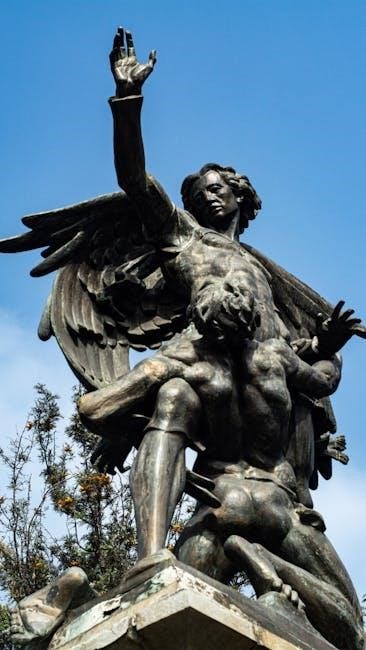
The Painting’s Iconography
Guido Reni’s painting symbolizes the cosmic battle between good and evil, with Archangel Michael triumphing over Satan, depicted as a dragon, embodying light’s victory over darkness․
3․1 Imagery of the Battle Between Good and Evil
Guido Reni’s painting vividly captures the dramatic confrontation between Archangel Michael and Satan, portrayed as a dragon․ Michael, clad in a Roman military cloak and cuirass, stands triumphantly, his sword raised high․ Satan, beneath his foot, is depicted with a twisted face and monstrous features, symbolizing evil’s defeat․ The dynamic composition emphasizes movement and tension, with angels joining Michael in the celestial battle․ Reni’s use of light and shadow heightens the emotional intensity, contrasting divine purity with the darkness of the fallen․ This iconic scene encapsulates the eternal struggle between good and evil, resonating deeply with Christian theology and art․
3․2 Symbolism of Light and Darkness
Guido Reni’s painting masterfully employs light and darkness to symbolize the conflict between good and evil․ Archangel Michael, bathed in radiant light, embodies divine purity and strength, while Satan, shrouded in shadows, represents chaos and evil․ The stark contrast between these elements underscores the spiritual battle, with light signifying redemption and darkness symbolizing sin․ Reni’s use of chiaroscuro amplifies the dramatic tension, creating a visual and emotional divide between the celestial and the fallen․ This duality reinforces the painting’s theological message, emphasizing the triumph of light over darkness and good over evil․
3․3 Depiction of Satan as a Dragon
In Guido Reni’s painting, Satan is depicted as a dragon with a human head, symbolizing evil and chaos․ This representation draws from biblical imagery, particularly the Book of Revelation, where the dragon embodies Satan’s fall․ The dragon’s grotesque features, twisted face, and rough, bat-like wings emphasize its malevolent nature․ Archangel Michael’s triumph over this creature visually reinforces the victory of divine justice over evil․ The depiction of Satan as a dragon underscores the painting’s theological themes, creating a striking visual contrast between good and evil, and highlighting the cosmic struggle between light and darkness․

Theological Themes in the Painting
The painting embodies central Christian themes: the battle between good and evil, divine justice, and the expulsion of evil from heaven, symbolizing eternal redemption․
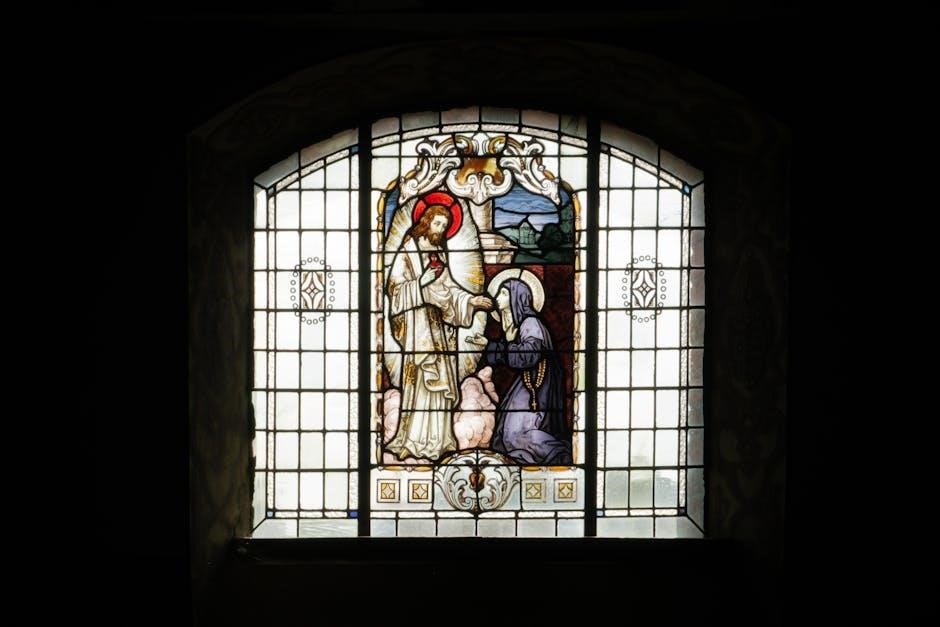
4․1 The Role of Archangel Michael in Christian Theology
Archangel Michael holds a significant position in Christian theology as a divine warrior and protector of faith․ He is often depicted as a defender of heaven, leading the battle against evil forces․ Michael is revered as a symbol of courage and righteousness, embodying God’s justice․ His role in defeating Satan, as described in the Book of Revelation, underscores his importance as a protector of the faithful and a champion of divine authority․ This depiction aligns with Guido Reni’s portrayal, highlighting Michael’s celestial authority and unwavering commitment to God’s will․
4․2 The Fall of Lucifer and the War in Heaven
The Fall of Lucifer and the War in Heaven are central to Christian theology, depicting a celestial conflict between good and evil․ Archangel Michael leads the faithful angels against Lucifer, who rebels against God․ This battle, described in Revelation, results in Lucifer’s transformation into Satan and his expulsion from heaven․ Guido Reni’s painting vividly captures this narrative, with Michael triumphantly trampling the dragon, symbolizing Satan’s defeat․ The artwork emphasizes the divine struggle and the ultimate victory of righteousness, resonating with the theological themes of redemption and the eternal conflict between light and darkness․
4․3 The Triumph of Good Over Evil
Guido Reni’s depiction of Archangel Michael triumphing over Satan embodies the ultimate victory of good over evil․ The painting symbolizes divine justice and the celestial triumph, where Michael, as a warrior of light, defeats the dragon representing Satan․ This triumph reinforces the theological message of hope and redemption, showcasing the power of faith and righteousness․ The artwork visually conveys the eternal struggle between light and darkness, with Michael’s victory signifying the enduring prevalence of good in the cosmic battle․ It serves as a powerful reminder of divine order and the inevitability of evil’s defeat․
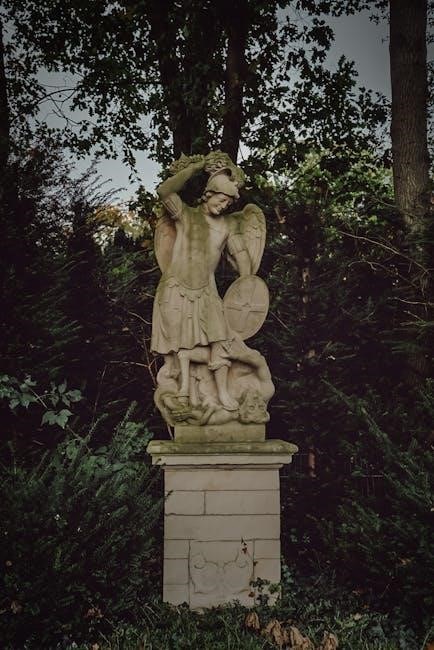
Artistic Elements and Composition
Guido Reni’s masterful use of light, color, and dynamic composition creates a powerful visual narrative, blending classical influences with dramatic movement and anatomical precision․
5․1 Use of Color and Light
Guido Reni’s use of color and light in Archangel Michael is striking, employing vivid hues and dramatic contrasts to emphasize the battle between good and evil․ The painting utilizes chiaroscuro, with light radiating from Michael, symbolizing divine grace, while darkness shrouds Satan, representing evil․ Reni’s mastery of tenebrism creates a dynamic interplay of shadows and illumination, heightening the emotional intensity of the scene․ The vibrant colors and intricate light effects not only enhance the composition but also deepen the theological significance, drawing the viewer’s eye to Michael’s triumphant figure․ This technique underscores the painting’s spiritual and artistic brilliance․
5․2 Anatomical Detail and Movement
Guido Reni’s Archangel Michael showcases exceptional anatomical detail, with the archangel’s poised stance and muscular form reflecting classical ideals of beauty and strength․ Michael’s graceful yet powerful movement conveys divine authority, while Satan’s twisted pose embodies chaos․ Reni’s precise rendering of human anatomy highlights the tension between order and disorder, emphasizing the battle’s intensity․ The flowing robes and dynamic postures create a sense of motion, drawing the viewer into the dramatic confrontation․ This attention to detail underscores Reni’s mastery of capturing both physical and emotional depth in his subjects․ The painting’s anatomical precision enhances its theological and artistic impact․
5․4 The Influence of Classical Art on Reni’s Work
Guido Reni’s Archangel Michael reflects the strong influence of classical art, particularly in its composition and anatomical precision․ The archangel’s idealized form, poised stance, and balanced proportions echo classical sculptures, evoking harmony and timeless beauty․ Reni’s meticulous attention to detail and use of contrapposto highlight his study of ancient Greek and Roman art․ This classical influence not only elevated the painting’s aesthetic but also reinforced its theological themes, presenting the divine as both powerful and serene․ The fusion of classical ideals with religious subject matter underscores Reni’s deep respect for tradition and his innovative approach to sacred art․
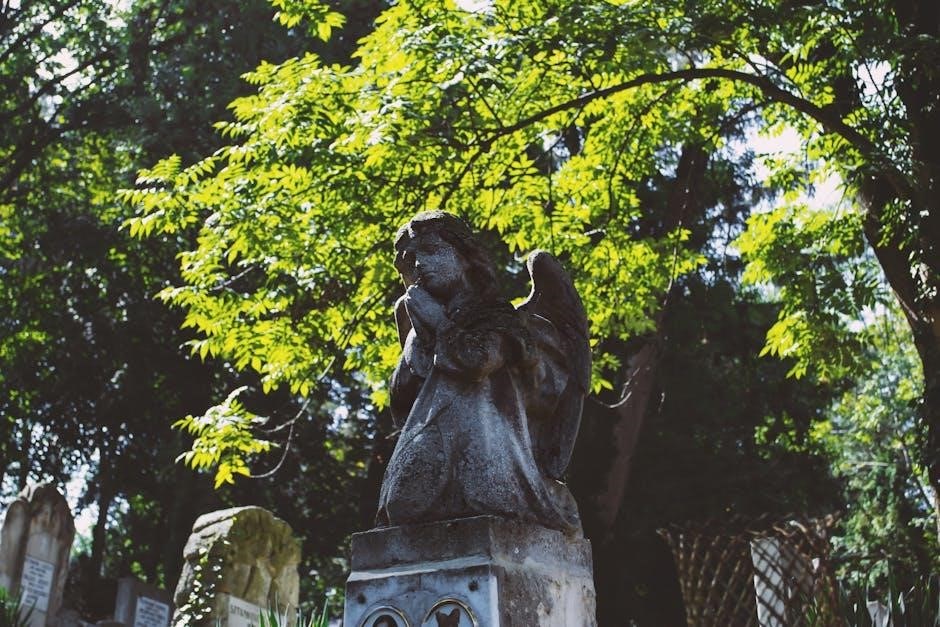
The Painting’s Legacy
Guido Reni’s Archangel Michael remains an iconic masterpiece, inspiring later artists and captivating audiences with its timeless depiction of divine triumph, solidifying its cultural and religious significance․
6․1 Influence on Later Artists
Guido Reni’s Archangel Michael profoundly influenced later artists, particularly in its dynamic composition and dramatic use of light․ The painting’s emotional intensity and anatomical precision inspired Baroque and Neoclassical artists to explore similar themes of divine conflict․ Its balanced proportions and vivid symbolism set a benchmark for religious art, while its portrayal of movement and tension became a model for depicting celestial battles․ Reni’s masterpiece remains a timeless icon, continuing to inspire artists and captivate audiences with its enduring beauty and spiritual depth, solidifying its place in the canon of Western art history․
6․2 Cultural and Religious Impact
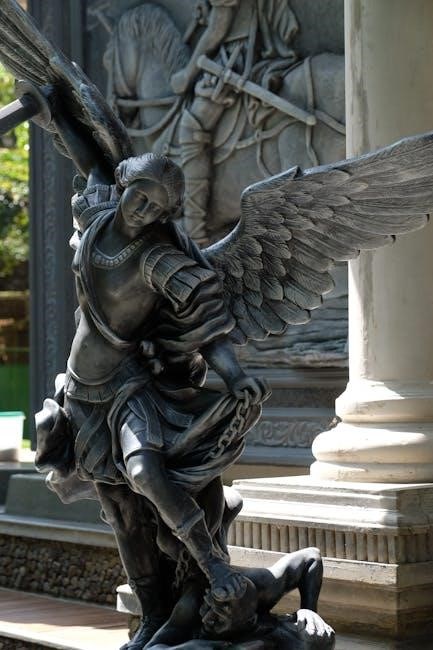
Guido Reni’s Archangel Michael holds profound cultural and religious significance, embodying the triumph of good over evil․ It became a powerful symbol of faith, inspiring devotion and reinforcing Catholic doctrine․ The painting’s dramatic imagery and emotional depth resonated deeply with audiences, making it a focal point in religious art․ Its widespread reproduction in engravings and prints further amplified its influence, spreading its message across Europe․ The work not only beautified places of worship but also strengthened religious identity, solidifying its role as a cultural and spiritual icon of the Baroque era, while addressing contemporary theological themes․ Its legacy endures as a masterpiece of sacred art․
6․3 Scandals and Controversies Surrounding the Painting
Guido Reni’s Archangel Michael was not without controversy․ Its commission by Cardinal Antonio Barberini sparked rumors of favoritism and artistic rivalry․ Reni’s meticulous style often led to disputes with patrons, and this painting was no exception․ Additionally, the artist’s personal life, including alleged ties to a mysterious woman, drew scrutiny․ Some art historians suggest the painting’s dramatic intensity reflects Reni’s inner turmoil․ These scandals, though overshadowed by the work’s brilliance, remain a fascinating aspect of its history, adding layers to its cultural narrative and enduring fascination․ The painting’s legacy is thus intertwined with both reverence and intrigue․
Guido Reni’s Archangel Michael embodies the triumph of good over evil, capturing divine struggle and redemption through masterful artistry, leaving an enduring legacy in Christian art and culture․
7․1 Summary of Key Points

Guido Reni’s Archangel Michael is a 17th-century masterpiece depicting the celestial warrior defeating Satan, symbolizing the triumph of good over evil․ Commissioned for a church, the painting showcases vivid imagery, with Michael trampling a dragon representing Satan․ Reni’s use of light and color emphasizes divine purity and power․ The artwork reflects Christian theology, highlighting Michael’s role as a protector and the fall of Lucifer․ Its dramatic composition and emotional depth have influenced later artists, solidifying its cultural and religious significance while sparking controversies over its interpretations and historical context․
7․2 Reflection on the Painting’s Enduring Significance
Guido Reni’s Archangel Michael remains a timeless masterpiece, captivating audiences with its powerful depiction of good triumphing over evil․ Its vivid imagery and emotional depth continue to inspire spiritual reflection and artistic admiration․ The painting’s universal themes of hope, faith, and the struggle between light and darkness resonate across cultures and centuries․ Reni’s mastery of composition and symbolism ensures its enduring relevance, making it a landmark in religious and artistic history․ Its influence on later artists and its role in devotion highlight its lasting impact, solidifying its place as a cultural and spiritual treasure․
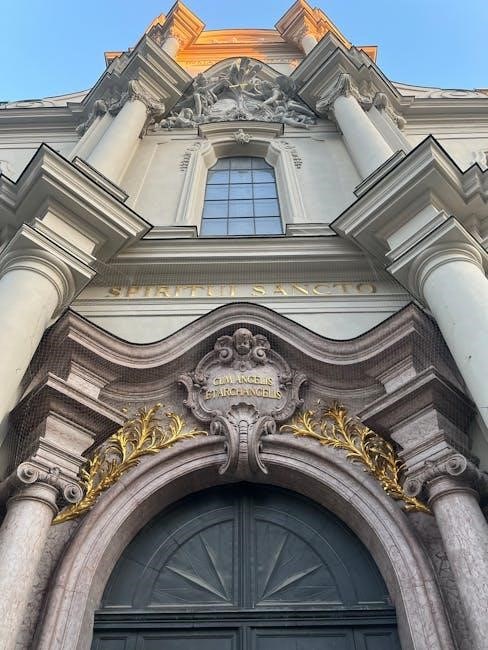



About the author